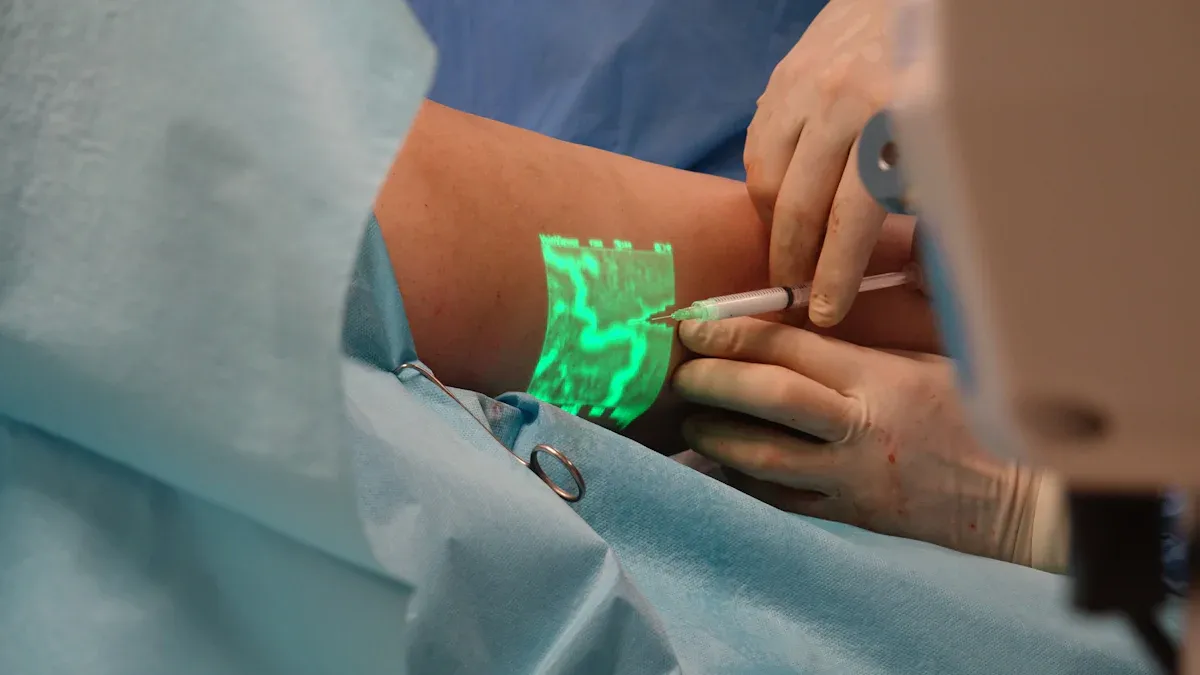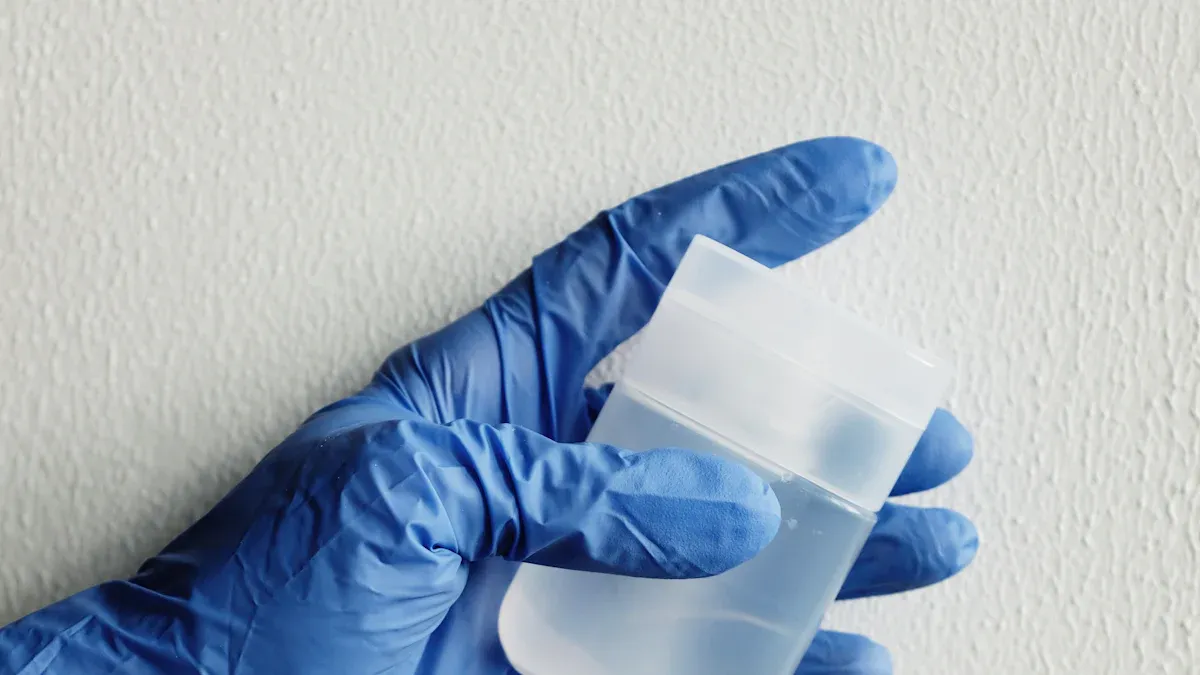
TAC Coating transforms medical devices by improving their performance and reliability. You benefit from its ability to resist wear, corrosion, and contamination. This innovation ensures safer tools and implants for patients. In 2025, TAC Coating: The Key to Overcoming Wear and Corrosion in Medical Equipment, continues to meet the demands of modern healthcare.
Key Takeaways
- TAC coating makes medical devices last longer by resisting wear. This reduces how often they need to be replaced.
- The coating stops rusting in tough medical settings. It keeps tools clean and safe for patients.
- TAC coating is safe for the body and prevents bad reactions. This makes medical procedures safer and more comfortable for patients.
ОВК Покрытие: ключ к преодолению коррозии в медицинском оборудовании

Exceptional Wear Resistance for High-Performance Devices
Medical devices face constant stress during use. Tools like surgical instruments and implants endure friction, pressure, and repeated movements. ОВК Покрытие: ключ к преодолению коррозии в медицинском оборудовании, provides a solution. It forms a protective layer that reduces wear and tear. This coating ensures that devices maintain their precision and functionality over time.
You benefit from this technology because it extends the lifespan of critical tools. For example, orthopedic implants coated with TAC experience less surface degradation. This means fewer replacements and better outcomes for patients. The coating also minimizes the risk of device failure during procedures. By choosing TAC-coated devices, you ensure reliability and durability in demanding medical environments.
Corrosion Protection in Harsh Medical Environments
Medical tools often encounter harsh conditions. Sterilization processes, exposure to bodily fluids, and chemical cleaning agents can cause corrosion. TAC Coating: The Key to Overcoming Wear and Corrosion in Medical Equipment, acts as a shield. It prevents rust and degradation, even in extreme environments.
This protection is vital for maintaining sterility and safety. Corroded devices can harbor bacteria, posing risks to patients. TAC coating eliminates this concern. It keeps surfaces smooth and resistant to chemical reactions. You can trust TAC-coated devices to perform consistently, even under challenging conditions. This innovation ensures that medical tools remain safe and effective for longer periods.
Enhancing Biocompatibility and Patient Safety
Reducing Adverse Reactions with Biocompatible Coatings
Medical devices often come into direct contact with sensitive tissues and fluids in the human body. This interaction can sometimes lead to adverse reactions, such as inflammation or allergic responses. You can prevent these complications by using devices coated with biocompatible materials. TAC Coating: The Key to Overcoming Wear and Corrosion in Medical Equipment, provides a safe and effective solution. Its unique properties ensure that the coating interacts harmoniously with the body, reducing the risk of irritation or rejection.
Biocompatible coatings also improve patient outcomes. For example, when used on catheters or surgical implants, these coatings minimize the chances of complications. This means faster recovery times and fewer follow-up procedures. By choosing devices with TAC coating, you prioritize patient safety and comfort.
Supporting the Development of Advanced Implants
The demand for advanced implants continues to grow as medical technology evolves. These implants must meet strict standards for safety, durability, and compatibility with the human body. TAC Coating: The Key to Overcoming Wear and Corrosion in Medical Equipment, plays a crucial role in meeting these requirements. It enhances the performance of implants by providing a protective layer that resists wear and corrosion.
You benefit from this innovation because it allows for the creation of more complex and reliable implants. For instance, joint replacements and dental implants coated with TAC last longer and function more effectively. This advancement reduces the need for replacements and improves the quality of life for patients. By supporting the development of cutting-edge implants, TAC coating helps drive progress in modern healthcare.
Improving Device Longevity and Contamination Resistance

Prolonging the Lifespan of Medical Tools and Implants
Medical tools and implants must endure repeated use and exposure to challenging conditions. Without proper protection, these devices can degrade quickly, leading to frequent replacements. You can rely on TAC Coating: The Key to Overcoming Wear and Corrosion in Medical Equipment, to extend the lifespan of these critical tools. This advanced coating creates a durable barrier that resists wear and corrosion, ensuring devices remain functional for longer periods.
For example, surgical instruments coated with TAC maintain their sharpness and precision even after multiple sterilization cycles. Similarly, implants such as hip or knee replacements benefit from reduced surface degradation. This means fewer replacements and better outcomes for patients. By choosing TAC-coated devices, you invest in long-term reliability and performance.
Preventing Bacterial Growth and Ensuring Sterility
Maintaining sterility is essential in medical environments. Bacteria can thrive on unprotected surfaces, increasing the risk of infections. TAC Coating: The Key to Overcoming Wear and Corrosion in Medical Equipment, addresses this issue by providing a smooth, non-porous surface that resists bacterial growth. This feature ensures that medical tools and implants remain sterile and safe for use.
You benefit from this innovation because it reduces the chances of contamination during procedures. For instance, catheters and surgical instruments with TAC coating are less likely to harbor harmful microorganisms. This enhances patient safety and supports faster recovery times. By prioritizing sterility, TAC coating helps you meet the highest standards of hygiene in healthcare.
TAC coating transforms medical devices by offering unmatched benefits. You gain wear resistance, biocompatibility, and contamination prevention. These features ensure safer and longer-lasting tools.
Investing in TAC coating technology improves patient care and device reliability. As healthcare evolves, this innovation drives progress and helps meet strict industry standards.
FAQ
What makes TAC coating different from other medical coatings?
TAC coating offers superior wear resistance, biocompatibility, and contamination prevention. Its advanced properties ensure medical devices perform reliably and last longer in demanding environments.
💡 Tip: TAC coating is especially effective for implants and surgical tools exposed to harsh conditions.
Can TAC coating reduce the need for frequent device replacements?
Yes, it can. TAC coating extends the lifespan of medical tools and implants by protecting them from wear, corrosion, and bacterial growth. This reduces replacement frequency.
Is TAC coating safe for use in the human body?
Absolutely. TAC coating is biocompatible, minimizing adverse reactions like inflammation or allergies. It ensures safe interaction with tissues and fluids, improving patient outcomes.
✅ Note: Always choose certified TAC-coated devices for maximum safety and reliability.


